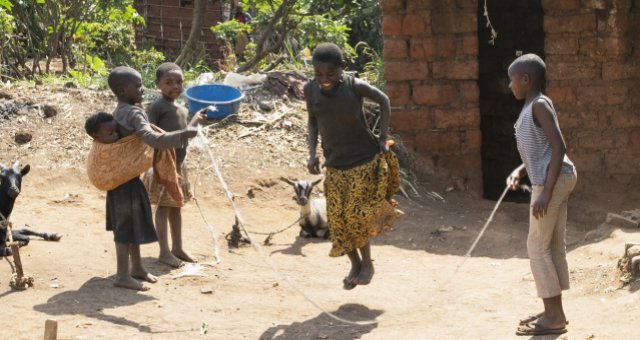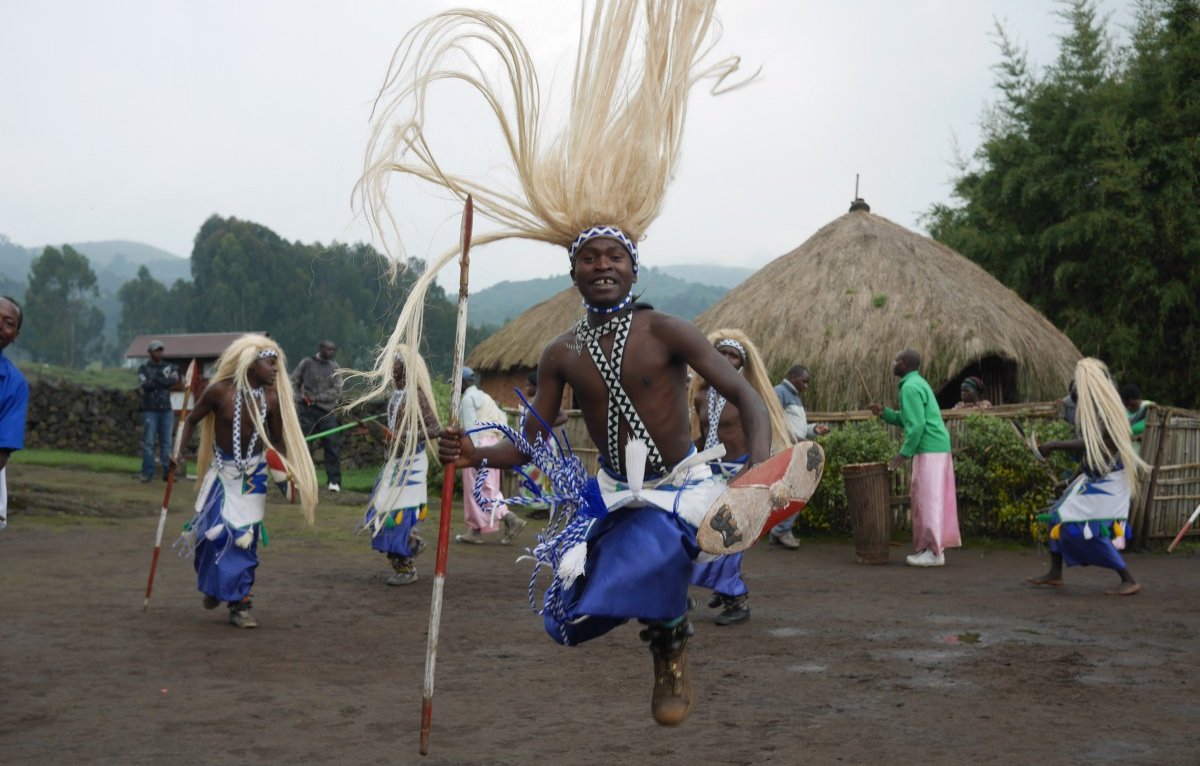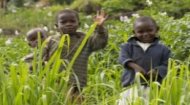|
|
|
Life in Rwanda |
Life in Rwanda |
Life in Rwanda | Life in Rwanda |
For information, videos and photos of
the African nation of Rwanda, check out our Rwanda pages.
More >
 |

Farming in Rwanda is the backbone of its small economy with about 80% dependent on the land for their living although as farms are split as they are handed down through the generations, farming is becoming increasingly fragmented there. The government has responded by educating farmers about best practices, consolidating land so that farmers can synchronise their crop production, sew improved quality seeds and use more fertiliser to maximise crop output from what land is available. These improvements have seen a doubling of bean production and a tripling of maize, wheat and cassava production over the last five years.
Although collecting water digs deep into the average Rwandan day, the government has commenced a program of installing water points so that most of the population are little more than a mile from a water source. Dinner often consists of Ugali, a maize and water paste; Isombe, mashed cassava leaves with dried fish and Matoke, a dish made from baked or steamed plantains being the staple diet for most Rwandans. Most rural Rwandans rarely eat meat, perhaps just a couple of times a month, and this had led to relatively high levels of protein deficiency in children leading to the disease Kwashiorkor. Then as night falls, its time to crawl into bed awaiting the day of another day. Despite some progress, 161st place out of 191 countries and territories in 2021 when ranked in terms of life expectancy, literacy, access to knowledge and the living standards of a country with a life expectancy of 66.07 years (2021). Poverty in Rwanda is still significant with around 39% of the population living below the poverty line. |





 Many Rwandans have constructed wooden bikes to help transport the coffee cherries to a washing station however logistics pose a problem with the countryside being unsuitable for vehicles for transportation with what are deemed as roads resembling more like goat trails. Landslides often destroy passable routes and washed away bridges make what could be a lucrative farming opportunity subsistence living with 65% of all rural Rwandans living on or below the poverty line. Another government lead initiative is the Girinka Program which aims to provide a cow for every poor family in Rwanda, helping to ensure that children suffering from malnutrition at least have access to fresh milk with all of its health benefits. To date around 100,000 cows have been distributed to Rwandan farming families with 350,000 a target figure.
Many Rwandans have constructed wooden bikes to help transport the coffee cherries to a washing station however logistics pose a problem with the countryside being unsuitable for vehicles for transportation with what are deemed as roads resembling more like goat trails. Landslides often destroy passable routes and washed away bridges make what could be a lucrative farming opportunity subsistence living with 65% of all rural Rwandans living on or below the poverty line. Another government lead initiative is the Girinka Program which aims to provide a cow for every poor family in Rwanda, helping to ensure that children suffering from malnutrition at least have access to fresh milk with all of its health benefits. To date around 100,000 cows have been distributed to Rwandan farming families with 350,000 a target figure. Life in Rwanda centres around the family homestead, a 'rugo', and traditionally consists of a number of bee hive-shaped houses within a larger, fenced compound. The household or 'inzu' normally consists of a husband and wife and children, sometimes with close relatives. Large families are common with an average women having 4.9 children, although many do not make it to their fifth birthday. Whilst the men work and the women maintain the household the children complete their day's education and after school its more chores including collecting firewood and water, normally carried in large jerry cans for the adults smaller cans for children.
Life in Rwanda centres around the family homestead, a 'rugo', and traditionally consists of a number of bee hive-shaped houses within a larger, fenced compound. The household or 'inzu' normally consists of a husband and wife and children, sometimes with close relatives. Large families are common with an average women having 4.9 children, although many do not make it to their fifth birthday. Whilst the men work and the women maintain the household the children complete their day's education and after school its more chores including collecting firewood and water, normally carried in large jerry cans for the adults smaller cans for children.


